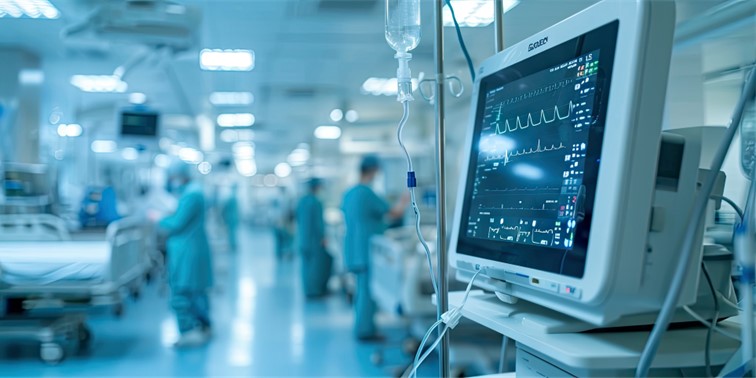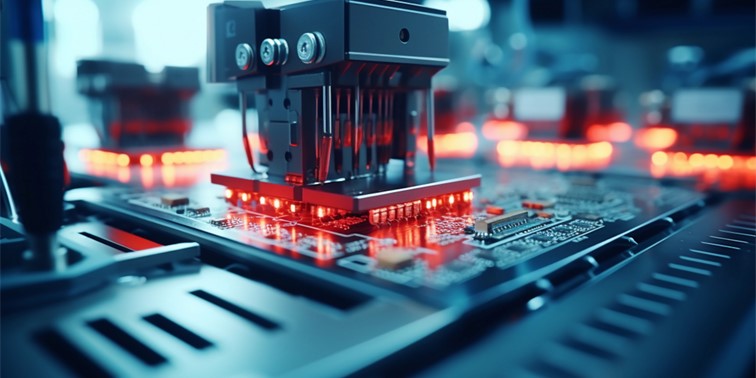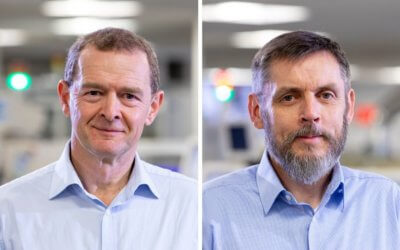Innovations in Artificial Intelligence (AI) and robotics are catalysing rapid change in every industry, none more so than in healthcare. The medical sector is undergoing the most astonishing digital transformation. Just as antibiotics changed the course of modern medicine in the 1940s, digital and electronic technology is about to alter healthcare beyond recognition.
Disruptive digital trends will revolutionise healthcare in 2024, from AI to wearables and connected electronic devices. It is now entirely conceivable that surgeons in the near future will be able to perform operations in different continents without even leaving their hospital base.
Delve a little deeper into what is on the horizon, and the British science fiction anthology series, Black Mirror, which focuses on humanity’s relationship to technology and its consequences, doesn’t seem quite so far-fetched after all.
Let’s take a look at the emerging disruptive medical technologies that are about to transform our world.
Wearable tech is about to disrupt the healthcare industry
Fitness monitors are just the beginning of what is possible in terms of monitoring health. Wearable devices are expanding rapidly in many fields of healthcare from home monitoring of vital signs and health conditions to wearables for surgical procedures.
There is an increasing demand from consumers to be able to monitor their own health, including heart rhythm, blood pressure, respiratory rate, sleep patterns, temperature and more.
Internet of Things (IoT) developments in wearables will undoubtedly lessen visits to the GP surgery and empower users to engage proactively with their own health. Wearables offer huge potential for early diagnosis, and will help patients take medications on time. Remote patient monitoring is about to become the norm and real-time data will support sharper and quicker clinical decision-making from afar.
Thanks to IoT, medical devices and apparatus, such as wheelchairs, defibrillators, nebulisers and other expensive equipment can also be tracked and easily located.
Innovative support tools driving evidence-based diagnosis and surgical accuracy
It’s not just physical health that is benefitting from these great technological advances. An AI-enabled health platform will be launched. The clinical decision support tool will help mental health practitioners to make a more accurate, evidence-based diagnosis, and improve outcomes.
Natural language processing is a branch of AI that focuses on the interpretation of human-generated spoken or written data. It will transform how we store and summarise medical data. Predictive analytics will vastly improve the process of diagnostics and patient health outcomes.
Robotic assisted surgical devices with instruments that mimic the human hand and wrist are already helping surgeons to emulate scaled-down movements of instruments inside the human body.
Implantable 3D-printed organs on the horizon
The boundary between body and technology was first crossed in the 1950s with the development of the cardiac pacemaker. Cardiac implantable electronic devices, such as pace makers, cardioverter-defibrillators, and cardiac resynchronisation therapy (CRT) devices are now widely used and accepted as people are living longer with more significant cardiac disease.
3D printing, including bio printing technology is revolutionising the healthcare industry. Earlier this year scientists successfully 3D printed an organ that mimicked lungs. Who would have envisaged we would be developing models to print tissue and organ replacements a few decades ago! But, the goal of developing functioning whole organs is becoming more of a reality.
While 3D organ printing is still in the early stages of development, 3D bio printing, especially in the area of skin and bone, has huge potential. One scientific report reviews the potential use of bioprinting for skin and wound reconstruction following burns, confirming it as extremely promising.
3D printing also offers great promise for cheaper production of surgical tools and improving personalised and accurate fitting of custom-made prosthetic limbs.
Will AI and machine learning beat GPs in diagnostics?
Machine learning (ML) is set to lead the way in healthcare. Data and analytics will help doctors make more accurate diagnoses and improve critical decision-making. But could chatbots really take the place of a GP for certain tranches of healthcare?
The Royal College of General Practitioners (RCGP) have dismissed claims that a chatbot can diagnose medical conditions as accurately as a GP.
While many physicians believe that chatbots will be useful for appointment scheduling and providing medication information, they point out the limitations with ML in healthcare in the interpretation of human emotion, and in taking into account psychological and social factors that may be impacting a patient’s health.
However, ML is gaining much interest in the field of image analysis and could prove to be much more effective than a human radiologist in detecting subtle tissue changes.
Predictive analytics is also an area to watch out for. The growth in healthcare data and the availability of predictive tools is catalysing predictive analytics in healthcare. Since 2011, over $1.9 billion of capital has been raised to fund companies that claim to use predictive analytics.
The role of medical manufacturing
Every challenge in the digital age besets an equally grand opportunity. Electronic medical devices are big business. Specialist medical device manufacturing is on the cusp of exponential growth. To prosper in the current healthcare landscape, device firms must position themselves as more than providers of a single medical component.
Research and development is happening at a frenetic pace. As a result OEMs are increasingly reliant on reputable EMS partners to help optimise products at every stage from concept to ramp.
In the manufacture of medical electronic devices risk management, quality and accuracy are essential. There are increasingly stringent regulatory requirements at every step of a product’s life cycle and with increasing interest in devices that will be applied to or implanted in the body, regulatory scrutiny is only set to get tougher.
Barney Sheppard, Sales Operations Manager at Chemigraphic says that medical device component manufacturing is no longer all about electronics. “Networking, wireless, computer, and data communication technologies are being incorporated into leading-edge medical electronics.”
The depth of medical equipment knowledge required in today’s electronic device manufacturing is colossal and requires continual analysis.
As one of the larger UK electronic medical device providers, Chemigraphic’s approach has been one of embracing technology and innovation. For example, at key test stations they use camera-based system verification, X-rays or automatic optical inspection (AOI) to double-check placement of materials at levels the human eye cannot identify.
Technology is having a massive impact on our lives and is changing healthcare for the better. Manufacturing in the medical sector is in part driving this growth and will be instrumental in the next wave of electronic technological advancement from motion control and bionic prosthetics to transplanted valves and robotic surgery instruments.
We simply cannot imagine the changes in healthcare and ground-breaking medical treatments that are yet to come. One thing is for sure. Forward-thinking EMS’s will be at the heart of electronic device manufacturing.











